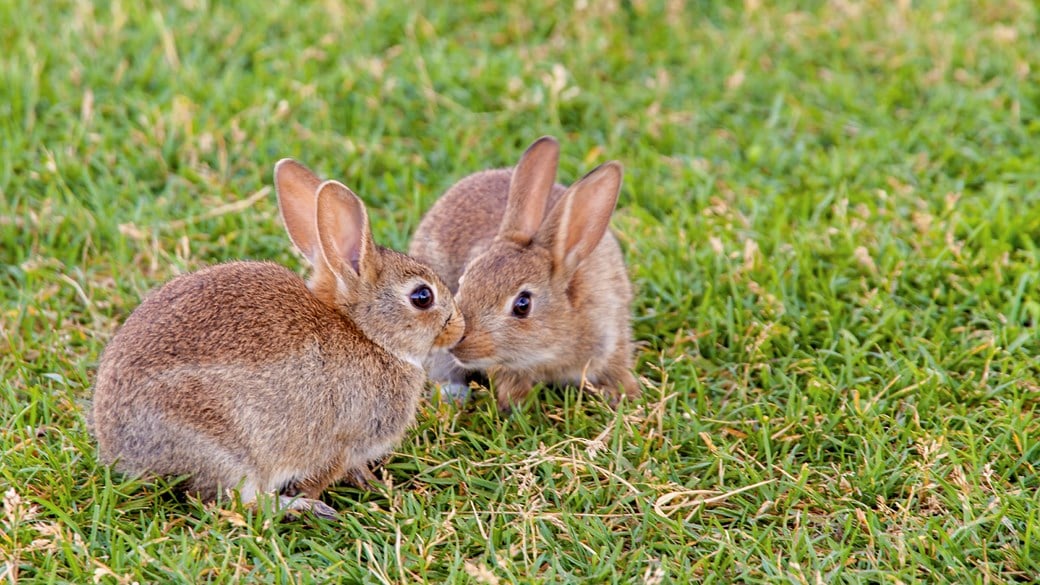
Mites and Your Rabbit
Mites live on the skin of your rabbit, and can make them itchy, uncomfortable and looking less than their best. Keeping your rabbit mite-free will keep them feeling and looking great!
Did you know there are actually many species of mites? Small and spider-like, with four pairs of legs, mites are actually a group on their own, with the smallest examples being less than 0.1mm long! Many mites are not parasites, and can actually be really helpful, for example as decomposters.
If you think that your rabbit may have mites, speak to your vet.
Mites and Your Rabbit
Some mites, however, can cause more trouble, for example those who live on our pets. Parasitic mites we might see on our rabbits include three major types:
Ear mites
The rabbit ear mite, or Psoroptes cuniculi, is a common parasite of pet rabbits. Affected rabbits are often seen to be shaking their head, and scratching at their ears, and you may be able to see crusty matter within the ear itself, as well as potentially painful ulceration.
Although common, other problems can cause similar signs in rabbits so ear mites should always be diagnosed by your vet. Any recommended cleaning of the ears when they are infected by ear mites should also be done by your vet rather than at home as it can be very painful.
Ear mites can be transmitted between bunnies, so if you have multiple rabbits together they will likely all need appropriate treatment.
Cheyletiella
The most common mite in rabbits is Cheyletiella parasitovorax, also known as ‘fur mites’ or ‘walking dandruff’. While most rabbits don’t show any discomfort from a Cheyletiella infestation, they can become itchy, especially if left untreated.
A cheyletiella infestation is usually seen as a build-up of dandruff or scurfy skin, usually concentrated along your rabbit’s back and especially between their shoulder blades. If your rabbit does develop cheyletiella it is important that they get a full health check alongside their treatment – rabbits who have dental disease, are obese, have arthritis or have spinal problems may all be struggling to groom, which can contribute to the development of mite problems.
Harvest Mites
Harvest mites, or 'chiggers', are seasonal parasites seen mainly in the autumn time – a habit which gives them their name Neotrombicula autumnalis. Harvest mites live in rural areas, and rabbits who have outdoor access may pick this parasite up. It is the larval stages that actually affect our pets, and these can be seen by the human eye as small red or bight orange dots which may cluster around the ears, head, feet or belly.
In rabbits, harvest mites seem to favour the ears, as there are lots of small places to hide, although they can be found elsewhere.
Mites are found across the UK, and rabbits can easily pick up mites from the environment, from other rabbits and from other household pets such as dogs. Bedding can also be a source of infection. While there is some seasonal variety – harvest mites for example are seen in autumn – mites are present throughout the year and exposure to mites is impossible to completely prevent.
Signs of a mite infection will alter depending on the mite in question, but there are some signs that might point to mites as a potential problem:
- Patches of dandruff or flaky skin
- Excessive grooming of any area
- Patches of hair loss
- Head shaking
- Excessive ear wax/dry build up
If your rabbit is experiencing any of these signs then make an appointment with your local Vets4Pets as soon as possible.
Although rabbits can get mites, healthy rabbits in a clean environment are not at a high risk of getting mites, and infections are usually mild and easily treated. Because of this, it is rare for rabbits to require routine treatment against mites. However, there are some simple steps to help protect your rabbit from mites:
- Monitoring. If you see any changes in your rabbit’s hair coat, skin or behaviour, always get them checked over by a vet who will be able to help control any mite infestation. Especially between spring and autumn, all rabbits should have a thorough check up at least daily due to the risk of flystrike.
- Grooming. Regular grooming, especially of long-haired rabbits, can help identify any changes in your rabbit’s skin early, which will help with effective and rapid treatment.
- Considering all pets. As mites can be transmitted between species, it is important to consider parasite protection for dogs and cats in the household.
- Bedding. Get bedding from a reputable supplier. Some people recommend freezing bedding for 24 hours before using it to kill mites, but it is important that bedding used is not frozen or damp, and this is impractical in many cases.
If you think your rabbit might have a mite infection, the best thing to do is to go to your vet. They can do a full physical examination, and check your rabbit over from nose to bottom! If there is a risk your rabbit may have mites, your vet will prescribe a treatment suitable for your pet, which should eliminate the mites.
If there is any doubt, your vet may recommend skin tests. These will look for the mites themselves, which are often invisible or barely visible to the human eye.
Sadly, although mites may prefer one species over another, some will also infect humans if they are in close enough contact. Both harvest mites and cheyletiella have been known to infest humans, although they usually only live on us briefly!
If you think you may have been exposed to mites and are concerned, always contact your doctor for advice.
Take a look here for more information on our Complete Care Plan, which provides all your pet’s parasite protection needs for a simple monthly payment.
Rabbit Advice
Read more of our expert rabbit advice to keep your rabbit happy and healthy.
